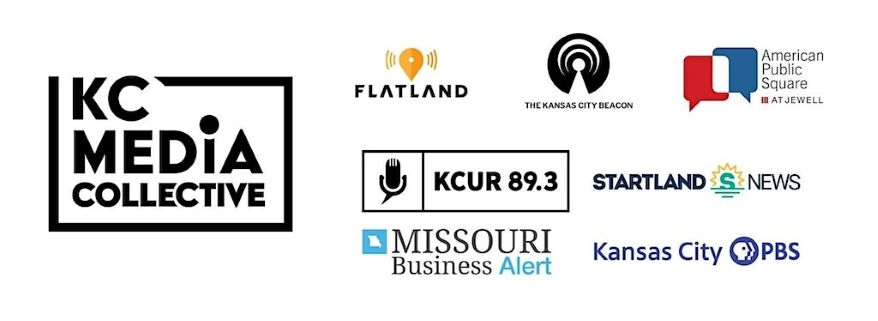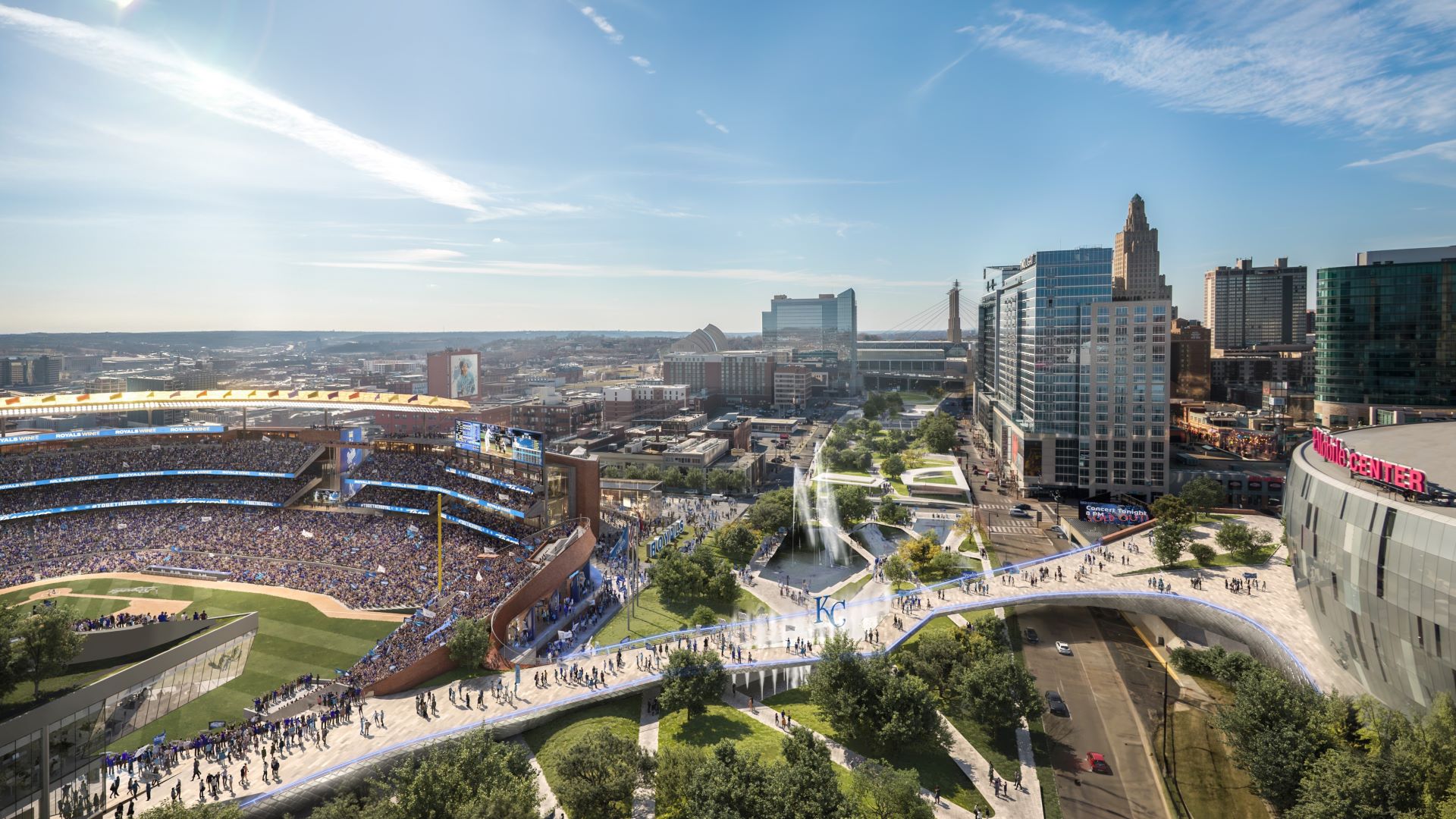Taxes Often Used to Make Stadiums More Lavish Economists suggest that when the public pays for a stadium, that money is used for expensive upgrades. What does that mean for the downtown Kansas City Royals stadium?
Published March 11th, 2024 at 11:46 AM
Above image credit: A view looking north from the proposed Kansas City Royals ballpark with the downtown skyline in the background. (Courtesy | Populous)Say you’re at a restaurant and you begin to salivate over the menu’s lobster thermidor or a flute of champagne. You might balk at the price — unless someone else is paying the bill.
Owners of teams worth billions think the same way.
Economists say that “gold plating effect” makes stadiums more expensive when taxpayers pitch in.
The phenomenon gets more pronounced as financial transparency fades. (Think about the likelihood of ordering that lobster if your dinner receipt was private or public.)
On April 2, Jackson County voters will have a say in whether the Royals and Chiefs will get $1 billion each for upgrades to Arrowhead Stadium and the construction of a ballpark in the Crossroads Arts District.
Some ballots have already been cast, but the Royals have yet to share the team’s full plan for paying for the Royals stadium.
That lack of transparency, experts say, could lead to more lavish spending on upgrades like video screens the size of houses, retractable fields that roll around on motorized wheels or luxury suites with kitchens and multiple bedrooms.
Here’s what we know about how the Royals plan to pay for the new stadium. The team plans to ask Kansas City and Missouri to fill a $700 million funding gap, even if Jackson County voters promise decades of sales tax revenue.
Nearly Half of NFL and MLB Subsidies go Toward Showy Upgrades
The gold plating effect is a relatively straightforward concept.
“In a nutshell, if you split the cost of something, you buy more of it,” said Geoffrey Propheter, a public finance professor at the University of Colorado-Denver.
Propheter studied more than 100 stadiums across the country and found that when taxpayers contribute more money to stadium projects, the cost per acre increases.
On average, for every $1 million that taxpayers spend on baseball or football stadiums, roughly half of that money goes toward upgrades and “extravaganzas.”
One example of what Propheter calls an “opulent” upgrade is the Texas-sized jumbotron at the Dallas Cowboys stadium. The $40 million screen — a total of 11,350 square feet — set a Guinness World Record in 2009 for the planet’s largest high-definition video display.
“If you were to pay the entire bill yourself for a facility, would it look like this?” Propheter asked. “Is that additional improvement going to generate more revenue for me than what it costs?”
Other examples listed in his study include the 50-foot-by-150-foot retractable glass doors at the Sacramento Kings arena or the grass field at Phoenix’s State Farm Stadium that can roll in and out of the stadium at the pull of a lever.
At Kansas City’s own publicly funded Arrowhead Stadium, the Hunt family enjoys a multilevel six-bedroom, three-bathroom luxury suite, complete with a spiral staircase, a fireplace and stained-glass windows.
The best way to prevent the gold plating effect, Propheter said, is to make sure everyone is paying for their own decisions — which means that the government gets involved in design decisions.
But there’s also a much simpler answer.
“If you want to minimize gold plating, minimize the subsidy,” he said. “Smaller subsidies mean smaller gold plating.”
Limiting Subsidies for Stadiums
While voters debate subsidizing the Chiefs and the Royals online, at coffee shops and at public meetings, decades of economic research show that stadium subsidies almost always represent poor investments of public dollars.
“It’s as close to conclusion as you’re gonna get an economist to agree to,” Propheter said. “This thing is going to cost you more money than it provides in benefits.”
A new campaign ad paid for by the Chiefs and Royals advertises a $1 billion investment in Kansas City, which would bring “good-paying jobs” and “small-business growth.”
But economists will tell you that these jobs are often displaced from other areas of the city. Any economic benefit pales in comparison to the $2 billion taxpayers will spend over the next 40 years.
This leaves “intangible” benefits, like the civic pride of having big league baseball and football teams.
“People love their teams,” labor economist Laura Dresser from the University of Wisconsin-Madison told KCUR’s Up to Date. “People are worried about not having their teams, and the team is something about the image of the community.”
Dresser is advocating for Kansas City to adopt a community benefits agreement, similar to one adopted in Milwaukee, that would hold the teams accountable to a set of measurable economic benefits. The teams missed a Feb. 14 deadline to finalize the agreement.
The Chiefs and Royals push the sales tax extension with an implied threat that, without the money and a new lease, they might take their teams to another county, to Kansas or, less likely, to another market.
It’s difficult to quantify the value of civic pride, but economists use a model called “contingent valuation” to estimate these kinds of intangible benefits.
The model uses techniques borrowed from environmental economics for studying things like how much money someone would be willing to pay to preserve public land or save an endangered species.
Contingent valuation finds that the civic pride of having a major league sports team is worth a fraction of the proposed $2 billion subsidy.
“We’re talking less than $20 to $30 million,” Propheter said, “and that’s being generous.”
Josh Merchant is a local government reporter with The Kansas City Beacon, where this story first appeared. The Beacon is a member of the KC Media Collective.





